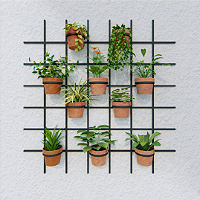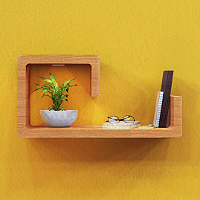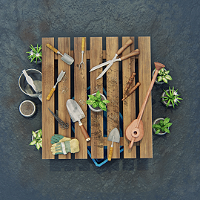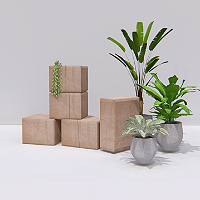When should I water your plants? What is a plant’s daily water requirement? How much water do potted plants require? Is it possible that I’m overwatering my plants? What is the best way to water plants?
These are typical concerns voiced by gardeners. Don’t forget to pay attention. While watering plants is important, no water should be wasted. Simply by expanding our knowledge, we may become more responsible consumers, gardeners, and citizens of the earth.
There’s a lot more to it than meets the eye. Accurately estimating how much water to apply, the most efficient method to use, the ideal frequency, and the best time of day to water are all crucial to a successful outcome. Also, as climate change is expected to put a strain on water resources, it is essential to find out how to reduce your reliance on municipal water systems in favour of more sustainable alternatives if you want to keep your plants alive and thriving.
We have all the information you need to properly care for both indoor and outdoor plants, including detailed instructions on how often to water them. Here’s our little guide of 6 essential tips for watering plants effectively.
When should I water my plants?
FIRST THING IN THE MORNING.
Morning is the best time to water outside flowers and vegetables since the soil is still chilly and the water has a better chance of accessing the roots before evaporating. If you water your plants first thing in the morning, you can ensure they have enough moisture in the soil to withstand summer heat.
Morning irrigation is best during a heatwave. Morning watering helps plants avoid daytime stress. Annuals and perennials need extra water in summer.
Annuals live one season. Includes marigolds, succulents, and pelargoniums. These plants have shallow roots and struggle in summer. When hot, water twice daily.
When the sun’s rays are softest, the ground is coolest, and the leaves have hours to dry before dark. 5-10 am is ideal. Evening watering invites bugs, fungus, and illness because the soil is already warm.
What is a plant’s daily water requirement?
SADLY, THERE IS NO STANDARD AMOUNT FOR IT.
In hot weather, it’s tempting to water just enough to keep the soil moist. Surface watering prevents deep root growth.
Choose a less frequent, deeper watering schedule. This strategy stimulates plant roots to seek water even when the soil appears dry. In the summer, water your flowers and veggies twice a week. After work, rushing outside to water your garden for 10 minutes is cruel for it.
Roots absorb most of a plant’s nutrients (water, sugars, and hormones), therefore water them deeply and infrequently. Soaking the soil 5 to 6 inches deep encourages plants to put out additional feeder roots.
Apartment Therapy suggests that withering and yellowing leaves indicate overwatering. Despite being watered, it’s dead and unresponsive, the air smells musty and smelly, and it attracts bugs. Spots or blisters on the leaf undersides indicate root rot.
Brown, shriveled leaves indicate a lack of water. Don’t let houseplant soil dry out. Because over and under watering have similar symptoms, you can check your plant by touching the soil; if it’s dusty, it’s not getting enough water. Accept guilt, water plants, and check leaves.
Watering a plant needs trial and error. Look for indicators of overwatering, avoid underwatering, and research the species.
Water the plant where it grows. Discover the plant’s environment. Provide eco-friendly water. Tropical plants need more water than native plants in semi-arid climates.
Soil moisture can be determined by finger testing and a moisture metre. Install a plant moisture metre. Keep the metre to measure soil progress. It measures soil moisture. Plants prefer moist soil.
How Can I Water My Plants Efficiently?
THE RULE OF THUMB IS TO NOT WATER PLANTS FROM ABOVE.
‘Wet or humid foliage will encourage fungal problems and evaporation from the surfaces.’
UK’s leading gardening charity RHS suggests avoiding plant leaves while watering.
To soak the earth around the plants. Hydration is provided straight to the plant’s roots, where it is most required. Consider wrapping a soaker hose between the plants to keep the soil in your flower or veggie area nice and moist for optimal growth.
The plant’s foliage should not be damp, but the roots should be kept moist. Because the water is supplied near the soil’s surface in the root zone, less water is lost to evaporation, and the water is more available to the plant’s roots.
The general rule is to avoid watering the lawn from above. The leaves may block the sun and prevent water from reaching the soil depending on the size of the plant.
How to water potted plants?
“Cup of Kindness” KILLS PLANTS FASTER THAN WATER. ENSURE YOUR CONTAINER HAS DRAINAGE HOLES.
If the soil is properly irrigated, earthenware, metal, or wood containers can be used. The soil in containers dries out faster than in flower beds, so more regular watering may be needed. The smaller the container, the more regularly it needs watering so plants can develop.
RHS recommends watering plants with 10% of the container’s volume, or 1 litre for a 10-liter pot. Use a saucer to collect and reuse pot liquid. Porous clay flower pots need frequent watering. To avoid waterlogging, water plants in nonporous pots less often.
When the top inch of soil is dry, water until the holes drain. Your pot shouldn’t be submerged. Make sure your container has drainage. Roots without enough water won’t thrive, and vice versa. Undrained containers breed rot and rotting roots.
Do not water on a tight timetable; instead, monitor your plants. If your plant is in a pot, you can feel the soil to see if it’s dry. Recently rained or wet earth is heavy, while dry dirt is lighter.
“Paper bag brown” reflects dryness in peat-based soil mixes. The top inch of soil should be moist. Your plants may need two daily checks for thirst. Because one plant needs watering doesn’t mean they all do. The pace at a pot dries out depends on elements including the plant’s size.
Water the roots well. Fill the container till it leaks. A 10- to 12-inch-tall container may need 3/4 gallon of water. Regularly hydrated plants rarely send roots to the bottom two-thirds of the pot. Without daily water, the plant wilts and dies.
How to reach the roots while watering?
USE A WAND.
Use a watering wand to water plants that are contained in containers rather than your hands. With the assistance of a watering wand, you can water plants located in both towering hanging baskets as well as short flowerpots that are situated on the ground without having to bend over or stretch your back.
By directing only the amount of water that is required to the plant’s base, you will not only be doing something that is beneficial to your back, but you will also be contributing to the saving of water.
Is rain enough for plants?
MAKE USE OF A RAIN GAUGE.
Plants, flowers, and shrubs in a garden need an inch and a half of water every week on average, though they may need more water if the weather is particularly hot and dry.
If you live in a location where there isn’t always enough rain for plants to thrive, you shouldn’t rely exclusively on rainfall to keep them healthy. Instead, you should look for other ways to maintain their vitality.
The amount of water that a garden receives over the course of a week can be measured with the use of a rain barrel. It is possible that watering is still required even if the rain gauge indicates that less than an inch of rainfall has been collected.
The plant absorbs and utilises sugar and other nutrients dissolved in water. As a result, if the water balance is awry, the plant is not only malnourished but also physically weak and unable to support its own weight. Maintaining your plant’s health and look is obvious once you understand how water promotes plant growth and what water does for a plant.








